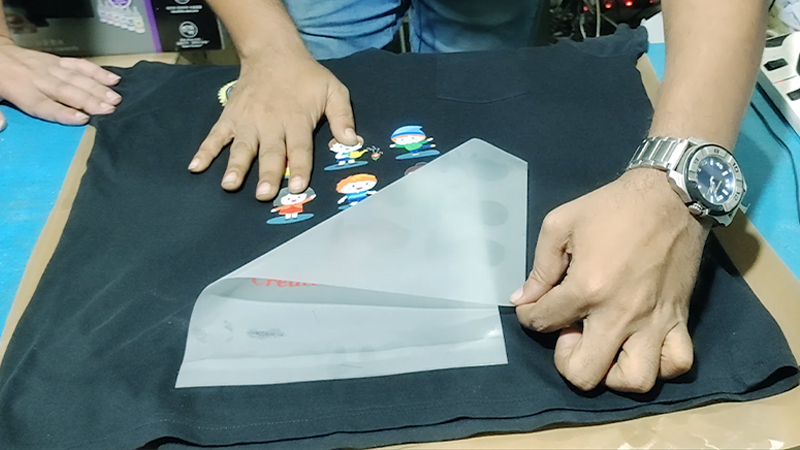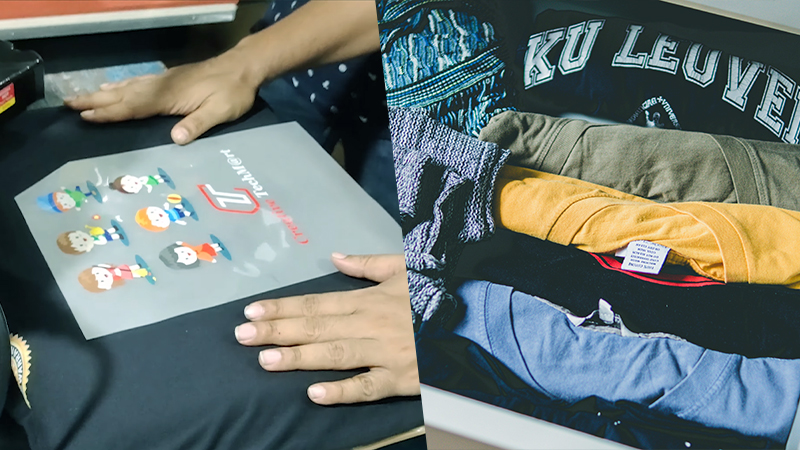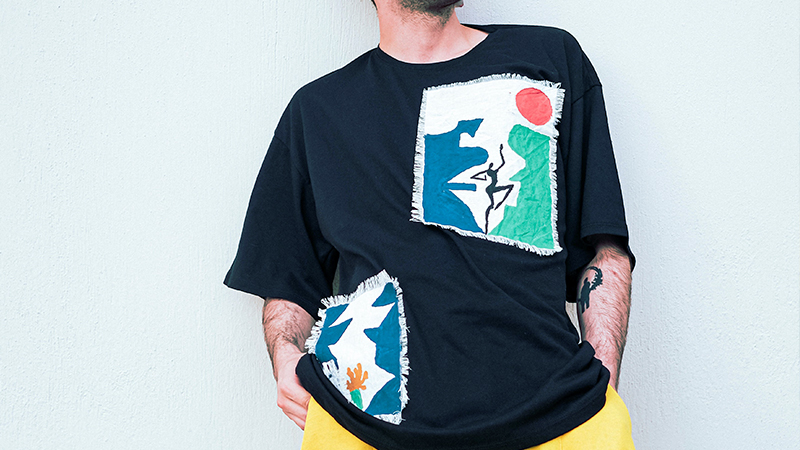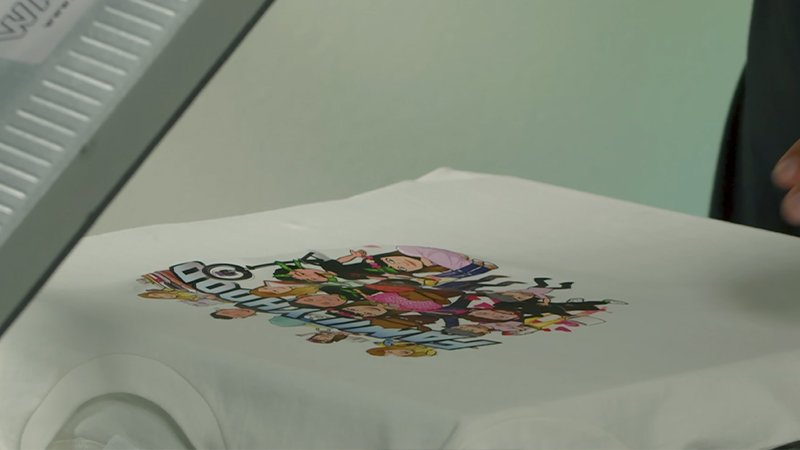Custom t-shirts have become a powerful means of self-expression, marketing, and commemorating special occasions. However, the cost of these personalized garments can vary widely based on several key factors.
From the quality of the shirt itself to the intricacy of the design and the chosen printing method, numerous elements influence the final price.
Understanding these variables is essential for individuals and businesses seeking to strike the right balance between budget and creativity.
In this exploration, we’ll delve into the various factors that contribute to the cost of custom t-shirts, providing insights to help you make informed decisions when bringing your unique designs to life.

What Is A Custom T-Shirt?
A custom t-shirt is a garment personalized to individual preferences, often featuring unique designs, logos, or messages.
Unlike mass-produced shirts, custom t-shirts are specially crafted to cater to specific tastes, occasions, or brands. They allow individuals, businesses, or organizations to express their creativity, promote their identity, or commemorate special events.
Customization options include choosing the shirt’s color, fabric, and style, as well as imprinting with techniques like screen printing, embroidery, or direct-to-garment printing.
These shirts serve various purposes, from marketing tools for businesses to cherished keepsakes for events and celebrations.
Ultimately, a custom t-shirt serves as a canvas for self-expression, enabling wearers to showcase their distinctiveness and make a statement through clothing.
How Much Does a Custom T-Shirt Cost?
The cost of a custom t-shirt can vary widely depending on several factors. These factors include the quality of the shirt, the printing method, the complexity of the design, the quantity ordered, and any additional customizations.
Here’s a breakdown of these factors:
Quality of the Shirt
The type of t-shirt material used significantly affects the cost. Standard cotton shirts are generally more affordable than higher-end fabrics like organic cotton or blends with polyester or rayon. Premium materials, such as bamboo or hemp, will also increase the cost.
Printing Method
There are several methods used to print custom designs on t-shirts, each with its own cost:
- Screen Printing: This is the most common and cost-effective method for bulk orders. It involves creating a stencil (or screen) for each color in the design. The more colors, the more screens are needed, which can increase the cost.
- Direct-to-Garment (DTG): This method is similar to printing on paper with an inkjet printer, but it’s specifically designed for fabric. It’s ideal for detailed, full-color designs. DTG is suitable for small quantities or even one-off prints, but it can be more expensive per shirt.
- Heat Transfer: This involves printing a design onto transfer paper and then using heat to adhere it to the fabric. It’s suitable for small orders or one-off designs, but it may not be as durable as other methods.
- Embroidery: Instead of printing, some choose to embroider designs onto t-shirts. This can be more expensive due to the labor involved, especially for intricate designs.
Complexity of the Design
The more complex the design, with multiple colors, gradients, or intricate details, the more it will typically cost. Screen printing, for example, may require additional setup for complex designs.
Quantity Ordered
Generally, the more shirts you order, the lower the cost per shirt. This is because many of the setup costs (e.g., creating screens, and preparing files) are fixed, so they’re spread out over a larger quantity.
Brand and Supplier
Different brands and suppliers have varying price points for blank t-shirts. Some high-end brands might cost more even before customization.
Price Difference Between Custom and Pre-made T-Shirts

Custom t-shirts tend to be more expensive than pre-made, mass-produced ones due to the personalized nature of the product.
Production Scale
- Custom T-Shirts: Custom t-shirts are typically produced in smaller quantities, often as per specific orders. This can result in higher per-unit production costs.
- Pre-Made T-Shirts: Mass-produced pre-made t-shirts benefit from economies of scale, allowing manufacturers to produce them at a lower cost per unit.
Materials
- Custom T-Shirts: Higher quality or specialized fabrics, like organic cotton or blends, can increase the cost of custom t-shirts.
- Pre-Made T-Shirts: Manufacturers of pre-made shirts often use standard, cost-effective materials.
Design Complexity
- Custom T-Shirts: Elaborate or multi-color designs can require more intricate printing processes, which can drive up the cost.
- Pre-Made T-Shirts: Standard, single-color designs are usually more cost-effective to produce.
Printing Method
- Custom T-Shirts: Different printing methods (screen printing, DTG, embroidery, etc.) have varying costs associated with them. Complex or specialty methods can be more expensive.
- Pre-made T-shirts: Mass-produced shirts often use high-speed, cost-effective printing techniques.
Quantity Ordered
- Custom T-Shirts: Ordering a small quantity of custom t-shirts may lead to higher individual unit costs due to setup fees and handling.
- Pre-Made T-shirts: Ordering pre-made t-shirts in bulk usually leads to lower per-unit costs.
Additional Customizations
- Custom T-Shirts: Extra features like custom labels, special packaging, or unique design placements can increase the overall cost.
- Pre-Made T-Shirts: Standard pre-made shirts usually don’t have additional customizations.
Brand and Supplier
- Custom T-Shirts: The reputation and quality of the custom t-shirt supplier can influence the pricing.
- Pre-Made T-Shirts: Well-known brands may come with a premium price.
Additional Costs for Elaborate or Multi-Color Designs

Complex or multi-color designs on custom t-shirts typically incur additional charges due to the extra time, materials, and expertise required in the printing process.
Here’s why:
Screen Printing
- Setup Costs: Each color in a design requires a separate screen, which involves a setup process. This incurs additional charges for each screen created.
- Printing Time: Printing multicolor designs can be more time-consuming as each color must be applied individually, often requiring precise alignment.
Direct-to-Garment (DTG) Printing:
- Ink Usage: Multi-color designs require more ink, which directly impacts the overall cost.
- Printing Time: DTG printers may take longer to produce complex or multi-color designs.
Embroidery
The number of stitches required for intricate or multi-color designs affects the overall cost. More stitches mean more time and labor.
Design Detail
Designs with fine lines, small text, or intricate patterns may require special attention and can lead to higher costs.
Expertise and Skill
For screen printing, separating colors correctly requires skill and experience. This can result in additional charges for complex designs.
Materials
Some complex designs may require specialized inks, such as metallic or glow-in-the-dark, which come at an extra cost.
Variations in Pricing Based on Printing Methods

The cost of custom t-shirts can fluctuate significantly depending on the chosen printing method. Different printing techniques come with distinct cost structures and considerations.
Here’s how pricing varies based on the printing method:
Screen Printing
- Cost-Efficient for Bulk Orders: Screen printing is ideal for large quantities of t-shirts, as the setup costs (creating screens) are spread across the order, resulting in a lower cost per shirt.
- Cost Increases with Colors: Each color in the design requires a separate screen, so the cost goes up with each additional color.
Direct-to-Garment (DTG) Printing
- Ideal for Complex and Full-Color Designs: DTG is great for intricate, detailed, or full-color designs, but it can be more expensive per shirt compared to screen printing.
- Cost-Efficient for Small Runs: DTG is cost-effective for small orders or one-off prints since there are no screen setup charges.
Heat Transfer Printing
- Suited for Small Quantities: Heat transfer is convenient for small batches and single t-shirt orders but may not be as durable as other methods.
- Customization May Add Costs: If you need custom transfers or special materials, it can increase the overall cost.
Embroidery
- Labor-Intensive: Embroidery involves stitching the design onto the fabric, making it labor-intensive and often more expensive.
- Well-Suited for Logos and Text: It’s a preferred method for logos and text, offering a professional and lasting finish.
FAQs
Can I Get a Quote Before Placing an Order?
Yes, most custom t-shirt providers offer a quoting system. You can specify your preferences, such as shirt type, design complexity, and quantity, to get an accurate price estimate.
Do Prices Vary Based on the Printing Method?
Yes, the printing method significantly impacts the cost. Screen printing, direct-to-garment (DTG), and embroidery each have different pricing structures.
Is There a Minimum Order Quantity for Custom T-Shirts?
Many providers have a minimum order quantity, which helps cover setup costs. It’s essential to inquire about this, especially for smaller custom orders.
Are There Additional Costs for Design Services?
Depending on the provider, there may be extra charges for design services if you don’t have your own artwork or require significant design assistance.
Can I Get Discounts for Ordering in Bulk?
Yes, ordering custom t-shirts in larger quantities often results in lower per-shirt costs. This is due to the economies of scale associated with mass production.
To Recap
The cost of custom t-shirts varies depending on multiple factors. Whether it’s the chosen fabric quality, printing method, design complexity, quantity, or additional customizations, these elements all contribute to the final price.
While custom t-shirts may come with a higher price tag compared to pre-made alternatives, they offer the invaluable benefit of personalization and self-expression.
Customers can find cost-effective solutions for bulk orders and simple designs, while those seeking intricate, full-color creations can expect to pay more.
Ultimately, understanding the interplay of these factors empowers individuals and businesses to make informed decisions when it comes to creating custom t-shirts that fit their needs and budgets.
Leave a Reply